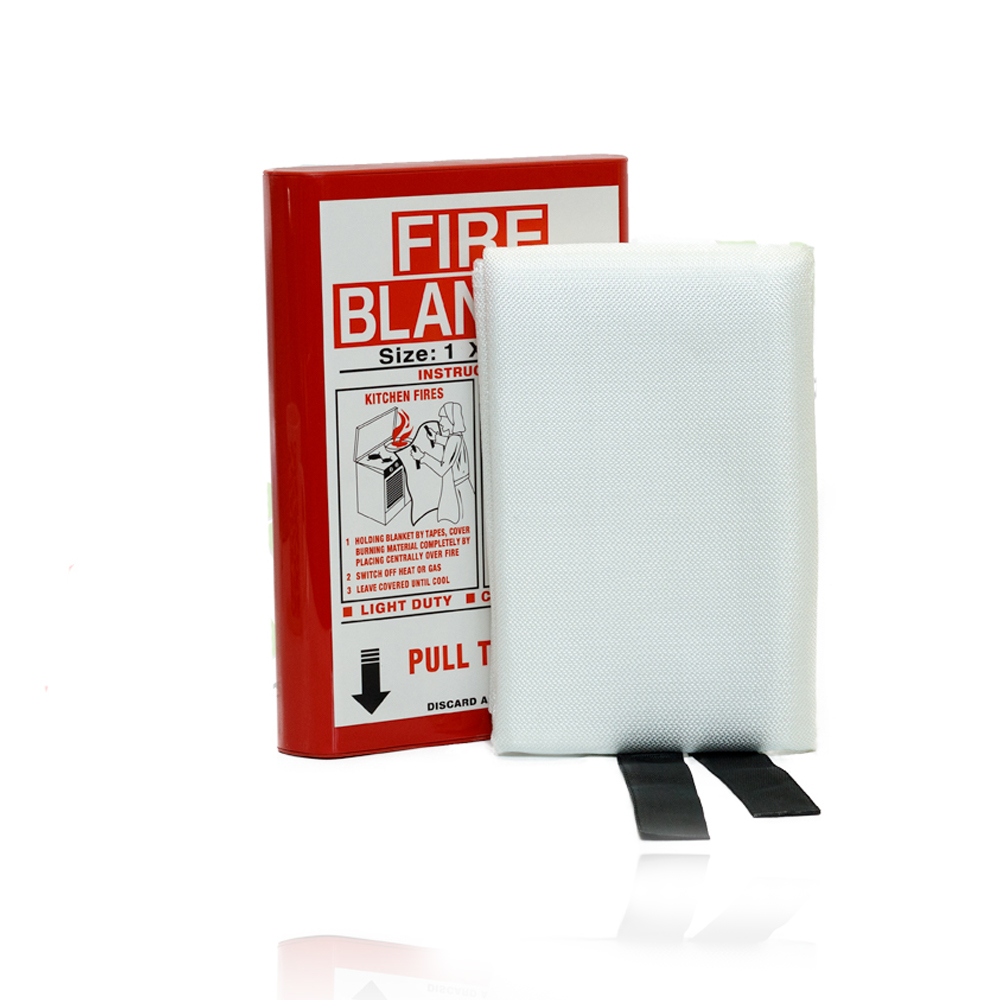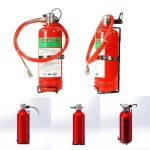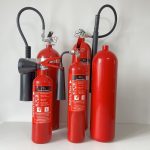When it comes to fire safety, having the right equipment is crucial for protecting lives and property. Two popular fire safety tools are fire blankets and fire extinguishers. While both can be effective in preventing fires from escalating, they serve different purposes and work in distinct ways. Understanding the differences between fire blanket vs fire extinguisher can help you make an informed decision about which one you need for your home or business. This guide will explore the features, uses, limitations, and considerations for both fire safety tools, empowering you to choose the one that best fits your needs.
Understanding Fire Blankets
What is a Fire Blanket?
A fire blanket is a safety device made from fire-resistant materials that can smother flames. They are usually made from fiberglass or other heat-resistant fabrics and come in various sizes. Most fire blankets are placed in a container that allows for quick access in an emergency. The primary function of a fire blanket is to cover and contain small fires, particularly those caused by cooking or in clothing.
How to Use a Fire Blanket
Using a fire blanket is straightforward. If you encounter a small fire, first ensure your safety and evacuate if the situation seems dangerous. If you feel it is manageable, carefully remove the blanket from its storage container. Hold the blanket by the tabs or edges, maintaining a safe distance from the flames. Approach the fire and gently lay the blanket over it to smother the flames. The fire blanket should cover the entire fire to restrict oxygen access. Once the fire is out, leave the blanket in position for a while to ensure it cools before handling it.
Ideal Situations for Fire Blanket Use
Fire blankets are particularly effective for certain fire scenarios. They are ideal for small kitchen fires, such as those involving oil or frying food. They are also useful for extinguishing flames on clothing or hair, making them a practical choice in environments like kitchens, laboratories, and workshops. Notably, fire blankets are not suitable for large fires or those that pose a significant risk to life; in such cases, a fire extinguisher or evacuation is necessary.
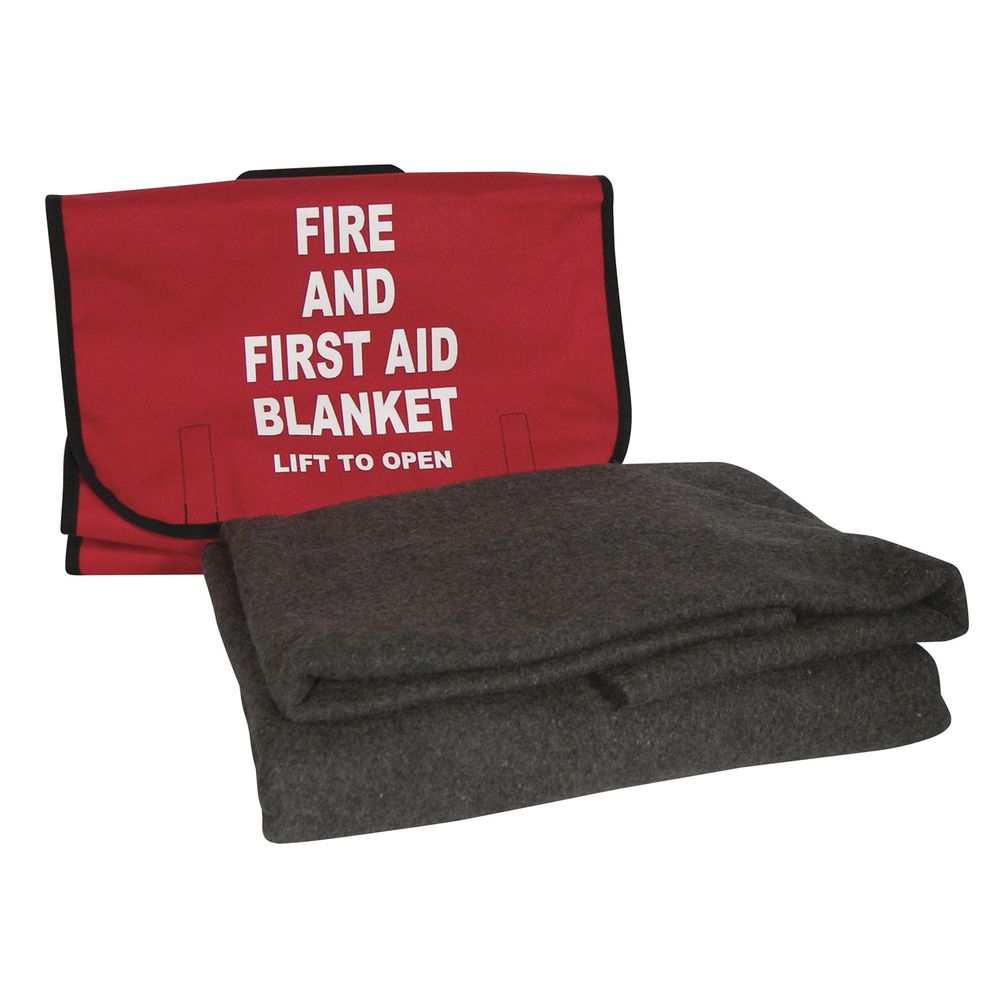
Understanding Fire Extinguishers
What is a Fire Extinguisher?
A fire extinguisher is a portable device that releases a specific agent to extinguish fire flames. Extinguishers come in various types, each designed for specific classes of fires based on the material involved. The most common types include dry chemical extinguishers, foam extinguishers, and CO2 extinguishers. They are typically stored in easily accessible locations within buildings, whether in homes, offices, or public spaces.
How to Use a Fire Extinguisher
Using a fire extinguisher requires familiarity with the PASS technique:
- Pull the pin to break the seal.
- Aim the nozzle at the base of the fire.
- Squeeze the handle to release the extinguishing agent.
- Sweep the nozzle side to side at the base until the fire is out.
It’s crucial to ensure that the fire is manageable and that you have a clear escape route before attempting to extinguish it. If the fire grows larger or uncontrollable, immediately evacuate the area and call emergency services.
Ideal Situations for Fire Extinguisher Use
Fire extinguishers are suitable for various types of fires, including those involving solid combustibles, flammable liquids, and electrical equipment. They are widely used in homes, vehicles, and businesses due to their versatility and effectiveness. In addition to being effective against small to medium-sized fires, having a fire extinguisher provides individuals and employers with confidence in dealing with potential emergencies.
Key Differences Between Fire Blankets and Fire Extinguishers
Primary Function and Use
The primary function of a fire blanket is to smother flames by restricting oxygen, while a fire extinguisher sprays a specific extinguishing agent to put out the fire. Fire blankets work effectively on small fires, particularly those originating from cooking or clothing. In contrast, fire extinguishers can be utilized on a broader range of fire types, making them more versatile in emergencies.
Ease of Use
Using a fire blanket is often simpler and requires less training. Most people can grab a fire blanket and cover the flames with minimal effort. On the other hand, using a fire extinguisher effectively can require more instruction and understanding of the PASS technique. The choice between the two may depend on the users’ comfort with operating the equipment under stress.
Maintenance and Lifespan
Fire blankets usually have low maintenance requirements. They do not lose effectiveness over time and can often be reused if they are not damaged after use. However, it’s essential to periodically check that the blanket has not been compromised and remains easily accessible. In contrast, fire extinguishers require regular inspections and maintenance. They need to be checked for pressure levels, physical damage, and expiration dates annually to ensure they function correctly when needed.
![]()
Limitations of Fire Blankets
Situational Restrictions
While fire blankets can be highly effective for specific circumstances, they are not suitable for large or significant fires. If a fire spreads beyond a small kitchen flame or ignites flammable liquids, a fire blanket may not provide adequate suppression. Moreover, they are not designed to extinguish fires involving electricity or gas. Users should always assess the fire’s size and type before attempting to use a blanket.
Limited Range
Fire blankets have a limited range compared to extinguishers. You must be relatively close to the fire to effectively deploy a blanket. If the flames are already out of control, reaching the fire to cover it may become too dangerous. In this case, evacuating the area and calling emergency services is your best course of action.
Limitations of Fire Extinguishers
Training and Complexity
Using a fire extinguisher requires understanding the specific type of extinguisher and the fires it is suitable for tackling. Not everyone may feel comfortable or knowledgeable enough to use an extinguisher, particularly under the stress of an emergency. This lack of familiarity can result in panic and poor decision-making during a fire.
Maintenance Requirements
Fire extinguishers require regular maintenance and inspections to ensure they are functional. Users need to check that the pressure gauge is in the green zone and examine for any signs of physical damage. Many people overlook the importance of maintenance, leading to extinguishers that are no longer effective when needed. To prevent this, establish a routine to check your extinguishers and ensure they are properly maintained.
When to Choose a Fire Blanket
Kitchen Use
Fire blankets are particularly suitable for kitchens, where many small fires can occur. Whether it’s a pot of oil that has caught fire or a grease flare-up, a fire blanket can quickly smother the flames, allowing you to address the situation without much fuss. Keeping a fire blanket near your cooking area can offer added reassurance for those routine cooking experiences.
Clothing Fires
In situations where a person’s clothing catches fire, a fire blanket serves as an immediate tool to extinguish the flames rapidly. By wrapping the individual in the blanket, you can smother the fire effectively without spreading it. Fire blankets are easy to handle, making them an ideal quick-response solution in emergency situations involving personal safety.
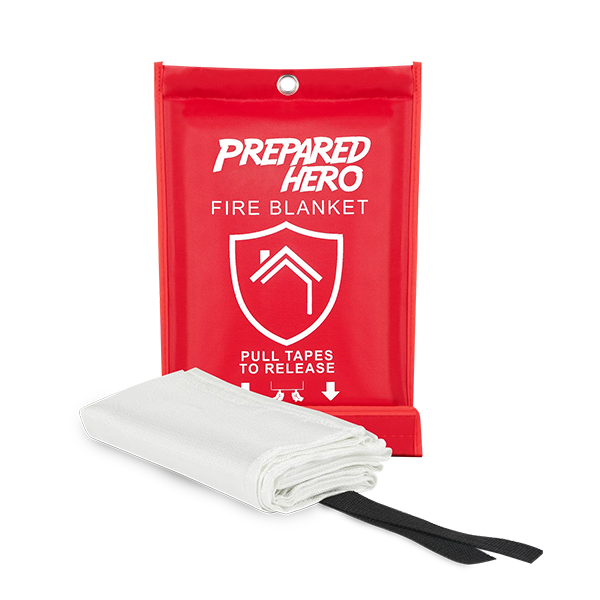
When to Choose a Fire Extinguisher
General Protection
In places like homes, offices, or warehouses, a fire extinguisher provides versatile protection against various fire types. Since fires can start from flammable materials or electrical equipment, having the right type of extinguisher on hand is crucial for swift action. Investing in a fire extinguisher that suits your specific risks—like a Class K extinguisher for kitchens or a Class B for fuel and liquid fires—enhances your fire safety measures significantly.
Commercial and Industrial Settings
In business environments, the presence of multiple fire hazards makes fire extinguishers essential. They cover a broader spectrum of fire types and can help manage potentially dangerous situations involving flammable materials, electrical equipment, or larger fires. Employers must ensure that employees receive training on how to use extinguishers properly, as well as the types of fires they may encounter.
Conclusion
Choosing between fire blanket vs fire extinguisher is essential for ensuring fire safety in your home or workplace. Both tools have unique features, uses, and limitations, making them suited for different scenarios. Fire blankets excel in small fire situations, particularly in the kitchen, while fire extinguishers are more versatile and suitable for various fire types.
Ultimately, your choice will depend on your specific needs, living situation, and comfort level with each device. Consider implementing both options to equip yourself with the best tools for fire safety. By being prepared and understanding how to use these tools effectively, you can protect yourself, your loved ones, and your property, ensuring a safer environment for everyone involved. Always remember that in case of a large or uncontrollable fire, evacuating the area and calling emergency services is the best course of action. Stay safe and informed!
